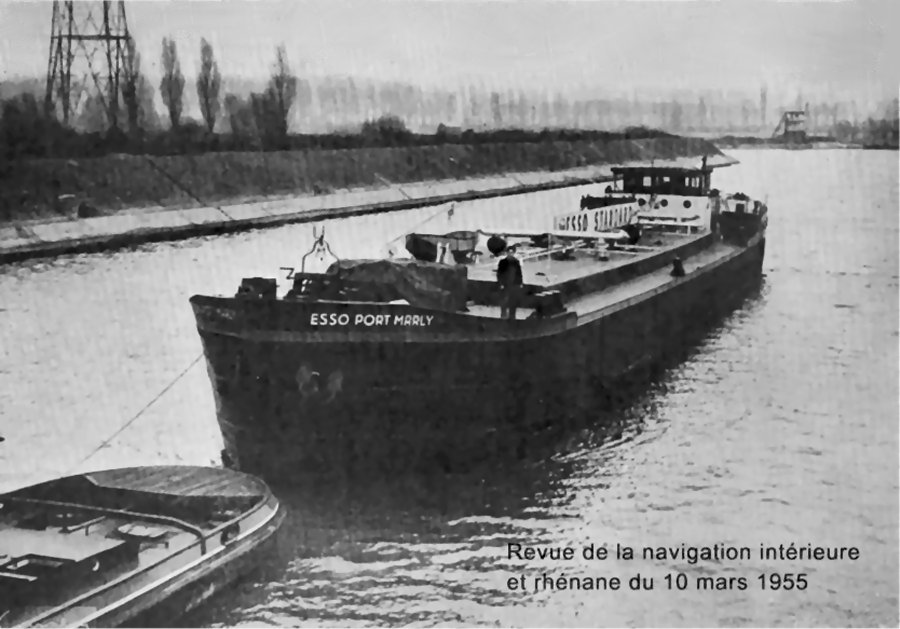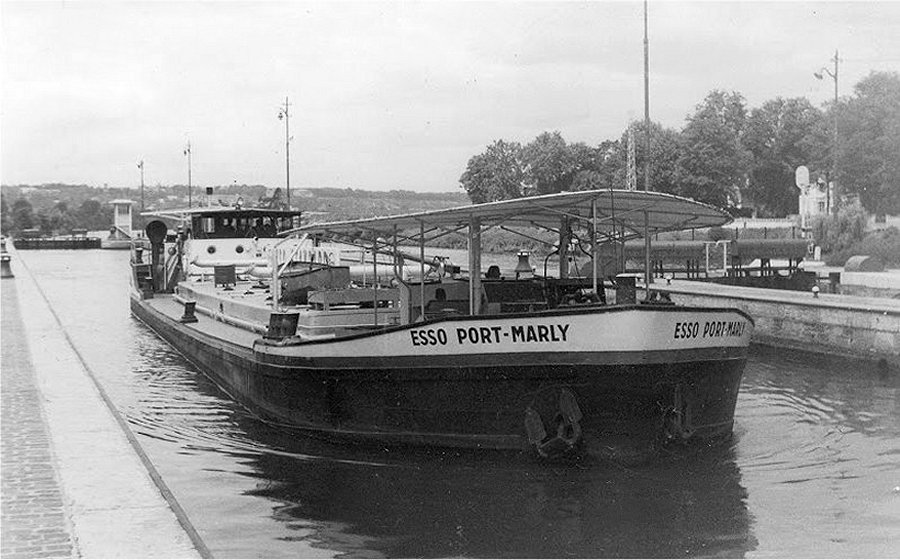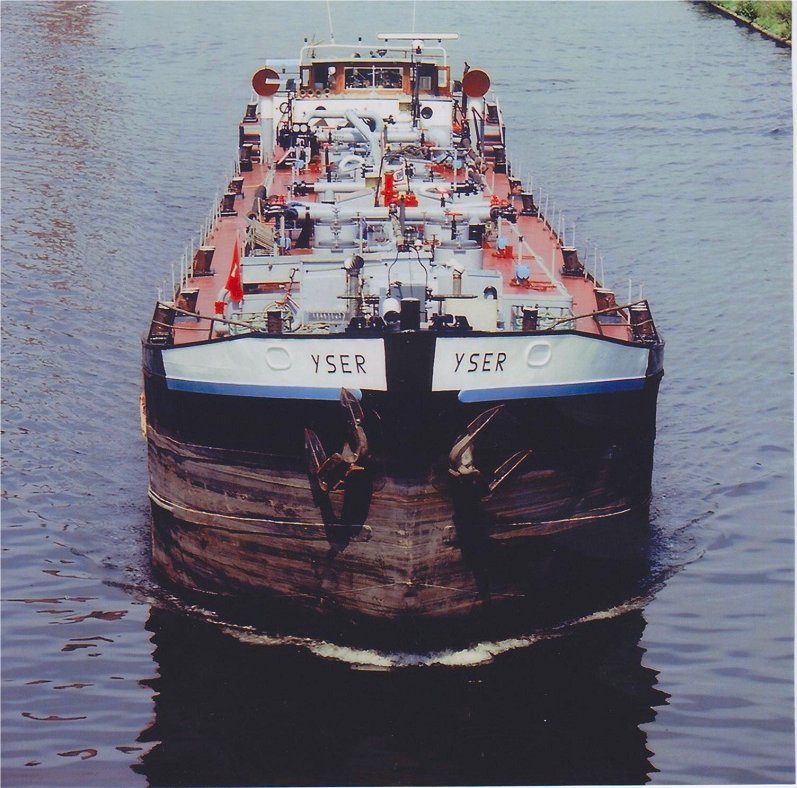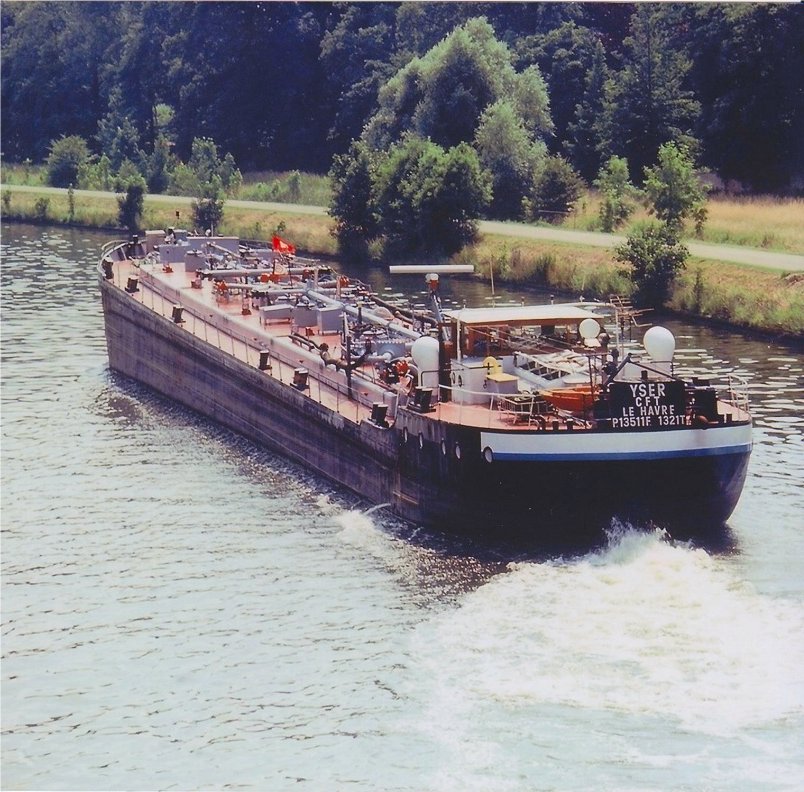Auke Visser´s Esso France Tanker's site | home
Esso Port-Marly - (1953-1989)
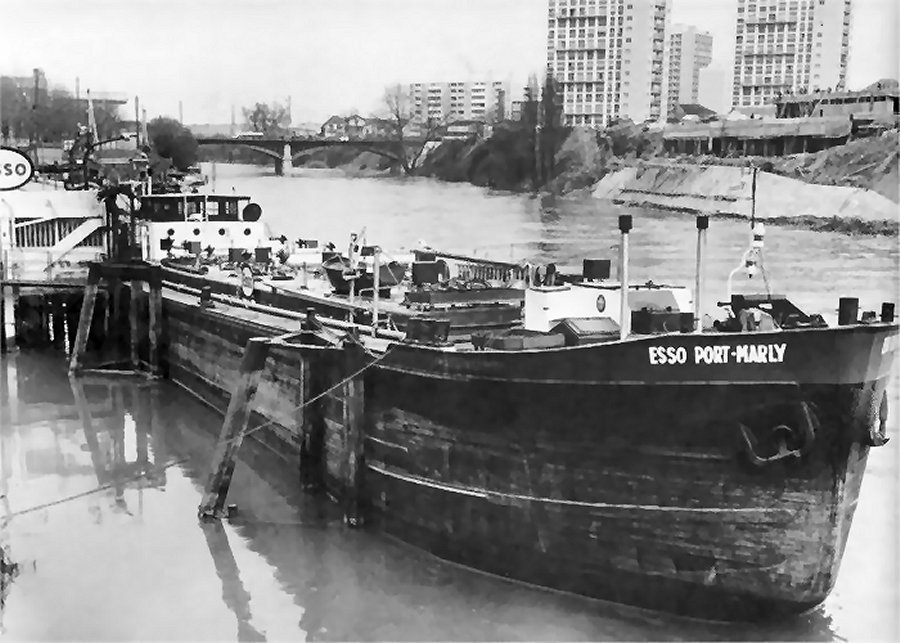
New unit built in France at Scar in Strasbourg from 1953:
"ESSO PORT-MARLY", 72 mtr on 7.95 mtr., become "YSER".
"Esso Port-Marly".
"Esso Port-Marly".
WITH CONVERSION, CLEAN LIVING
It's bad enough for a vessel to fall into a category of surplus transportation. If in addition she's technically obsolete, she may as well ring up
"finished with engines."
Such was the situation of the self-propelled barge £550 Port-Marly a couple of years ago. Responding to changes in transportation require-
ments caused by the start-up of new refineries and pipelines near Paris, Esso Standard S.A.F. had already retired several barges and had
transferred a sister-barge of the Esso Port-Marly to the Southwest of France. The affiliate now needed a lubricating-oil carrier — a sophisti-
cated sort of vessel which could segregate different grades of product and carry different products on successive voyages in the same
tanks without contaminating the cargo.
The 15-year-old Esso Port-Marly was not what you would call sophisticated. The 800-ton clean-and-dirty-products carrier had only eight
tanks and a cargo-handling system far from adequate for handling a number of clean products. Even so, she had potential for conversion
— as Esso Standard S.A.F. engineers subsequently proved. By the end of 1968, she had hauled 31,740 metric tons of 18 grades of lube
oils at 35 per cent less than what it would have cost her company to charter a barge. Thanks to her special equipment and coated tanks,
her claims record was clean — she hadn't had a single case of contaminated cargo.
In converting the £550 Port-Marly, the objective was to allow for the simultaneous transportation of five different grades of lubes without risk
of contamination. The first job was to increase the number of tanks to 12. In doing this, some of the old tanks not previously used for dirty
products were rearranged, and former tanks numbers 7 and 8 were divided into tanks numbered 7, 8, 9 and 10. They are served by a new
cargo piping system. Each tank was equipped with a 2-inch stripping pipe (51 mm) with remote-controlled sectioning valve. The new cargo
pipe was connected in each group of tanks (5 and 6, 7 and 8, 9 and 10) to a transversal line, which called for the installation of three extra
deck-lines on the trunk (see diagram). Tanks 5 through 10 were coated to prevent corrosion and permit thorough cleaning before loading
particularly sensitive products.
All tanks have special equipment to prevent hydration of products sensitive to moisture. With level indicators, hatches do not have to be
opened during loading or discharge, and dehy-drators utilizing activated silica gel indicators give extra protection.
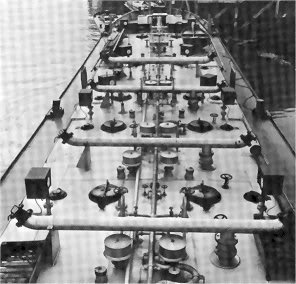
In converting the self-propelled barge into a lube-oil carrier, Esso Standard S.A.F. engineers increased the number of tanks from 8 to 12
and installed a new cargo piping system as shown below.
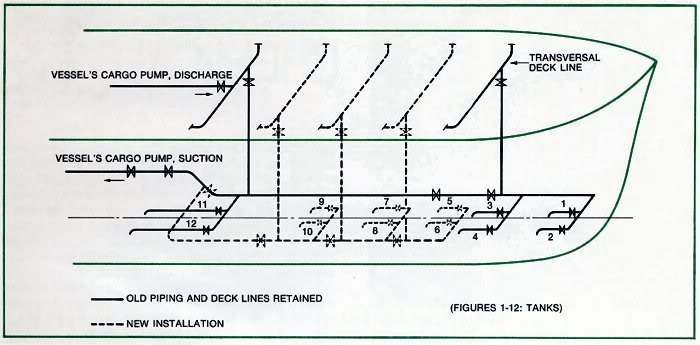
Principal caracteristics Esso Port-Marly ;
length:
|
177 ft. 8 in. (53.85 m)
|
width:
|
26 ft. ( 7.85 m)
|
draft:
|
lift. ( 3.45m)
|
capacity:
|
1,007m3
|
deadweight:
|
821.95 metric tons
|
number of tanks:
|
12
|
cargo pump:
|
200 m3/h
|
motor;
|
400 hp at 600 rpm
|
speed when loaded:
|
7.5 knots (14 km/h)
|
speed in ballast:
|
9.7 knots (18 km/h)
|
built:
|
1952
|
heating coils
|
"Yser", ex. "Esso Port-Marly".
"Yser", ex. "Esso Port-Marly".
Motortanker : ESSO PORT-MARLY
Scheepsgegevens :
Scheepstype
|
Motortankschip
|
Brandmerk
|
P 13511 F
|
ENI-nummer
|
Onbekend
|
Bouwjaar
|
1953
|
Bouwwerf
|
S.C.A.R. in Strasbourg
|
Tonnage
|
821 or 787 at 2.95 mtr.
1321
|
Afmetingen
|
53.85 x 7.85 x 3.45
72.00 x 7.95 x 3.34
|
Voortstuwing
|
400 pk Baudouin, type VG8
|
Mutaties :
Mutatiedatum
|
1989
|
Naam
|
ESSO PORT-MARLY
|
Eigenaar
|
Esso Standaard SA in Paris
|
Naam
|
1989 - YSER
|
Eigenaar
|
CFT/Sotrabel SA, Le Havre
|
